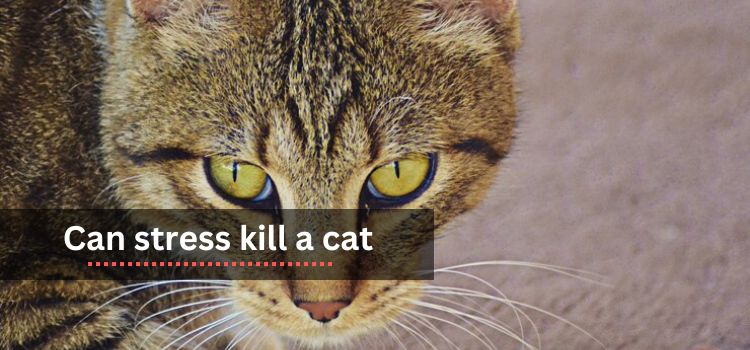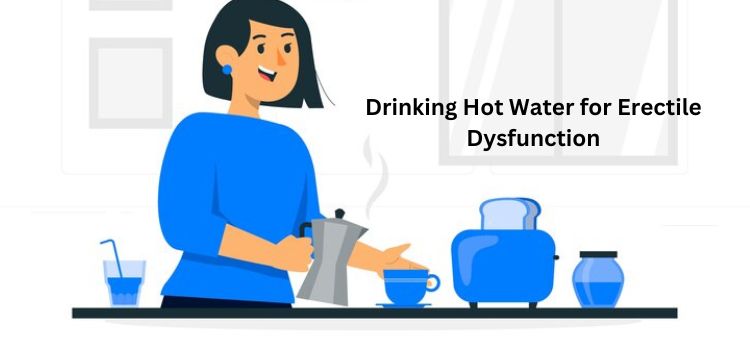Felines, known for their autonomy and elegance, can likewise encounter pressure very much like people. Be that as it may, cat pressure is much of the time neglected or misconstrued by many feline proprietors. Grasping the signs, causes, and ways of reducing pressure in felines is pivotal for their general prosperity. This article dives into the universe of cat pressure, investigating its side effects, causes, and the board procedures to assist your shaggy companion with living a more joyful, better life.

Introduction to Feline Stress
Felines, with their confounding way of behaving and tranquil disposition, frequently appear to be impenetrable to the anxieties of the world. Notwithstanding, this is a long way from reality. Cat pressure is a critical issue that can influence a feline’s physical and emotional wellness, prompting different issues in the event that not tended to. As a feline proprietor, perceiving and overseeing pressure in your catlike companion is fundamental for guaranteeing their prosperity. This article means to reveal the intricacies of cat pressure, giving experiences and commonsense counsel on the most proficient method to help your feline adapt to and defeat pressure.
Figuring out Cat Pressure
What is Catlike Stress?
Cat pressure alludes to the physiological and mental reaction of felines to changes or difficulties in their current circumstance. Very much like people, felines have a characteristic survival reaction to stressors, which can be set off by different elements. At the point when these stressors become ongoing or overpowering, they can prompt huge wellbeing and conduct issues.
Normal Indications of Stress in Felines
Perceiving the indications of stress in felines is the most important move toward resolving the issue. A few normal markers include:
• Changes in Hunger: A focused on feline might eat fundamentally pretty much than expected.
• Expanded Stowing away: Felines frequently stow away when they feel restless or compromised.
• Inordinate Preparing: Over-prepping can be an indication of stress, prompting balding or skin disturbance.
• Hostility: A focused on feline could turn out to be more forceful towards different pets or people.
• Litter Box Issues: Changes in litter box propensities, for example, peeing fresh, can show pressure.
• Vocalization: Expanded whimpering or yowling can be a pressure reaction.
• Diminished Liveliness: An indifference toward play or connection can be an indication of a focused on feline.
Reasons for Cat Pressure
Natural Variables
Natural changes are one of the essential drivers of stress in felines. These can include:
• Moving to Another Home: Migrating can be profoundly distressing for felines because of the adjustment of climate.
• New Increments to the Family: The presentation of new pets or relatives can upset a feline’s feeling of steadiness.
• Noisy Commotions: Development, tempests, or firecrackers can set off pressure in felines.
• Absence of Concealing Spaces: Felines need safe spots to withdraw when they feel compromised or overpowered.
Social Elements
Social communications, or the scarcity in that department, can likewise add to cat pressure:
• Struggle with Different Pets: Regional debates or harassing from different creatures can cause critical pressure.
• Changes in Human Connection: Varieties in how much consideration or warmth from proprietors can influence a feline’s feelings of anxiety.
• Fear of abandonment: A few felines experience pressure when abandoned for expanded periods.
Wellbeing Related Variables
Medical problems are another basic variable that can cause pressure in felines:
• Disease or Injury: Agony or inconvenience from medical conditions can prompt expanded pressure.
• Persistent Circumstances: Long haul medical problems, like joint inflammation or dental sickness, can add to continuous pressure.
• Maturing: More seasoned felines might encounter pressure connected with mental deterioration or changes in actual capacities.
The Effect of Weight on Felines
Actual Wellbeing Outcomes
Stress can significantly affect a feline’s actual wellbeing, including:
• Debilitated Resistant Framework: Persistent pressure can debilitate a feline’s insusceptible framework, making them more vulnerable to diseases.
• Stomach-related Issues: Stress can prompt gastrointestinal issues like retching or the runs.
• Skin Issues: Inordinate prepping because of stress can cause skin disturbances or contaminations.
• Respiratory Issues: Stress can compound respiratory circumstances, particularly in felines with previous issues.
Conduct Changes
Conduct changes because of stress can likewise be critical and shifted:
• Animosity: Stress can prompt expanded hostility towards different pets or people.
• Aversion: Focused on felines might keep away from collaboration, prompting social withdrawal.
• Damaging Way of behaving: Stress can bring about ways of behaving like scratching furniture or pushing over objects.
• Improper Disposal: Stress can make felines pee or crap outside the litter box.
Diagnosing Pressure in Felines
Veterinary Appraisal
On the off chance that you suspect your feline is worried, a visit to the veterinarian is urgent. The vet can preclude any hidden medical problems that may be adding to the pressure and give direction on overseeing it.
Observational Strategies
Notwithstanding veterinary appraisal, noticing your feline’s way of behaving and climate can give experiences into possible stressors. Keeping a diary of any progressions in conduct, hunger, or litter enclosed propensities can be useful in recognizing examples and triggers.
Overseeing and Lessening Pressure on Felines
Establishing a Protected Climate
A free from any potential harm climate is fundamental for lessening pressure in felines. Here are a few hints:
• Give Concealing Spots: Guarantee your feline approaches safe concealing spots, like covered beds or cardboard boxes.
• Keep a Steady Everyday practice: Felines blossom with schedule, so attempt to continue taking care of, recess, and prepping plans predictable.
• Decrease Clamor and Interruptions: Limit clearly commotions and unexpected disturbances in the home.
Improving Social Cooperations
Positive social associations can assist with lightening pressure:
• Hang out: Take part in intuitive play and petting meetings with your feline.
• Regard Limits: Permit your feline to move toward you as opposed to compelling connection.
• Give Mental Excitement: Use puzzle feeders and toys to keep your feline intellectually locked in.
Advancing Actual Wellbeing
Keeping up with your feline’s actual wellbeing is essential for decreasing pressure:
• Ordinary Vet Check-Ups: Guarantee your feline gets customary wellbeing check-ups and inoculations.
• Adjusted Diet: Give a nutritious and adjusted diet to help generally speaking wellbeing.
• Work out: Empower actual work through play to assist with lessening pressure and keep a solid weight.
Ecological Improvement for Stress Alleviation
Intelligent Toys
Intelligent toys can keep your feline engaged and diminish pressure:
• Puzzle Toys: These toys challenge your feline’s psyche and give excitement.
• Laser Pointers: Laser pointers can draw in your feline in perky movement.
• Feather Wands: These toys imitate prey and can energize regular hunting ways of behaving.
Scratching Posts and Climbing Trees
Scratching posts and climbing trees are fundamental for a feline’s prosperity:
• Scratching Posts: Give different scratching presents on fulfill your feline’s need to scratch and check an area.
• Climbing Trees: Climbing trees offer vertical space for your feline to investigate and work out.
Safe Outside Access
For certain felines, safe outside access can be helpful:
• Catios: Encased open-air spaces, or catios, permit your feline to securely partake in the outside.
• Rope Preparing: Train your feline to stroll on a chain for directed outside investigation.
Diet and Nourishment
Significance of a Decent Eating regimen
A decent eating regimen is essential for your feline’s wellbeing and stress the board:
• Excellent Food: Pick great feline food that meets your feline’s wholesome necessities.
• Customary Taking care of Timetable: Keep predictable taking care of timetable to give steadiness.
Stress-Lessening Food Varieties
Certain food varieties and enhancements can assist with diminishing pressure:
• Omega-3 Unsaturated fats: These can assist with decreasing irritation and work on general wellbeing.
• L-Theanine: An amino corrosive found in green tea that can advance unwinding.
• Probiotics: Backing stomach-related wellbeing and can diminish pressure-related stomach-related issues.
Social Treatments and Preparing
Encouraging feedback Preparing
Encouraging feedback can assist with overseeing pressure:
• Reward-Based Preparing: Use treats and acclaim to compensate for wanted ways of behaving.
• Consistency: Be reliable in preparing to assist your feline with having a good sense of reassurance.
Desensitization Strategies
Slow openness to stressors can assist with decreasing responsiveness:
• Progressive Presentations: Gradually present new pets or changes in the climate.
• Controlled Openness: Utilize controlled openness to desensitize your feline to stressors like clear commotions.
Regular Cures and Enhancements
Homegrown Cures
Home-grown cures can offer normal pressure alleviation:
• Catnip: While invigorating for certain felines, catnip can have a quieting impact after starting fervor.
• Valerian Root: Known for its quieting properties, valerian root can assist with diminishing pressure.
Pheromone Treatment
Pheromone diffusers can establish a quieting climate:
• Feliway: A well-known brand of pheromone diffuser that can assist with decreasing pressure and uneasiness.
• Splash and Module Diffusers: Use shower or module diffusers in regions where your feline invests the most energy.
Drugs for Serious Cases
When to Think about Medicine
In extreme cases, medicine might be important:
• Counsel a Vet: Consistently talk with your veterinarian prior to beginning any drug.
• Screen Impacts: Consistently screen your feline for any secondary effects or changes in conduct.
Normal Meds Recommended
A few normal meds for stress in felines include:
• Fluoxetine (Prozac): An upper that can assist with diminishing uneasiness and hostility.
• Amitriptyline: Utilized for nervousness and particular kinds of agony.
• Buspirone: An enemy of uneasiness prescription that can assist with social and natural pressure.
Forestalling Cat Pressure
Routine and Predictability
Maintaining a routine can prevent stress:
- Consistent Schedules: Keep feeding, play, and sleep schedules consistent.
- Predictable Environment: Minimize sudden changes in the home environment.
Gradual Introductions to Changes
Introduce changes slowly to avoid stress:
- New Pets: Introduce new pets gradually, allowing your cat to adjust at their own pace.
- Household Changes: Make household changes slowly to give your cat time to adapt.
Success Stories
Real-Life Examples of Stress Management
Sharing success stories can inspire and educate:
- Case Study 1: A cat with separation anxiety improved significantly with the use of pheromone diffusers and interactive toys.
- Case Study 2: A multi-cat household saw reduced aggression and stress through environmental enrichment and positive reinforcement training.
Conclusion
Feline stress is a multifaceted issue that requires a comprehensive approach to manage effectively. By understanding the signs and causes of stress, cat owners can take proactive steps to create a supportive and enriching environment for their pets. Whether through environmental enrichment, dietary adjustments, or behavioral therapies, there are numerous strategies to help alleviate stress and improve the overall quality of life for cats. Remember, each cat is unique, and finding the right combination of approaches may take time and patience. Ultimately, a happy and stress-free cat is a healthier and more content companion.
FAQs
1. Can stress cause my cat to lose weight?
Yes, stress can lead to weight loss in cats due to changes in appetite and eating habits. If you notice significant weight loss, consult your veterinarian to rule out any underlying health issues.
2. How can I tell if my cat is stressed?
Common signs of stress in cats include changes in appetite, increased hiding, excessive grooming, aggression, and litter box issues. Observing your cat’s behavior and looking for these indicators can help you identify stress.
3. Are there any foods that can help reduce stress in cats?
Yes, certain foods and supplements, such as those containing omega-3 fatty acids, L-theanine, and probiotics, can help reduce stress in cats. Consult your veterinarian for recommendations tailored to your cat’s specific needs.
4. Can environmental enrichment really help reduce my cat’s stress?
Absolutely. Environmental enrichment, including interactive toys, scratching posts, and safe outdoor access, can provide mental and physical stimulation, helping to reduce stress and improve your cat’s overall well-being.
5. When should I consider medication for my cat’s stress?
Medication should be considered in severe cases where other stress-reduction methods have not been effective. Always consult with your veterinarian before starting any medication to ensure it is appropriate for your cat’s specific situation.


